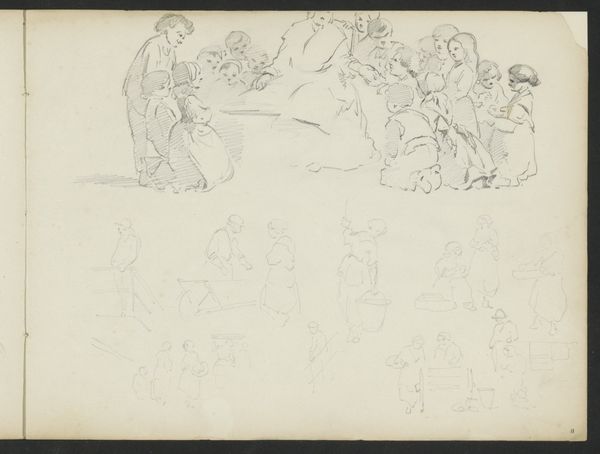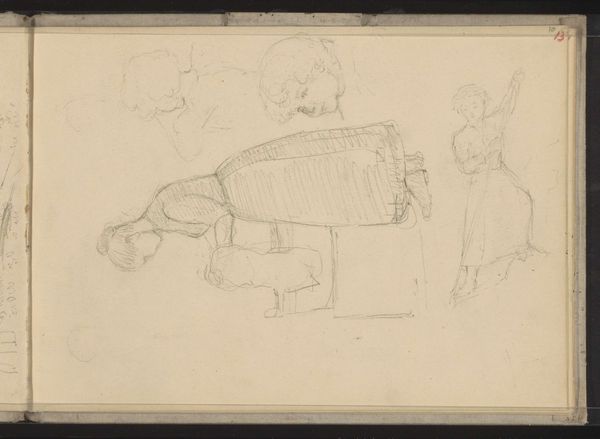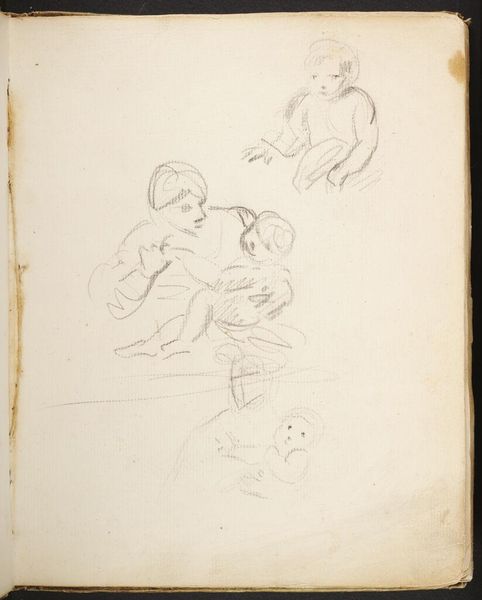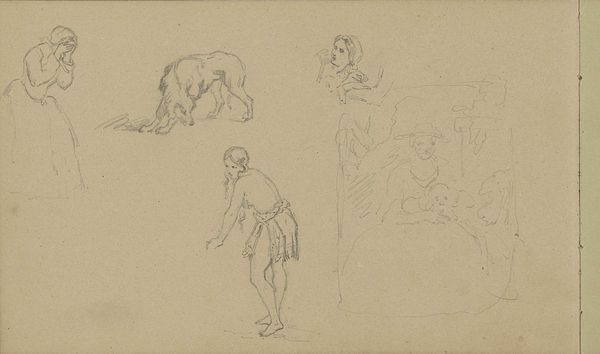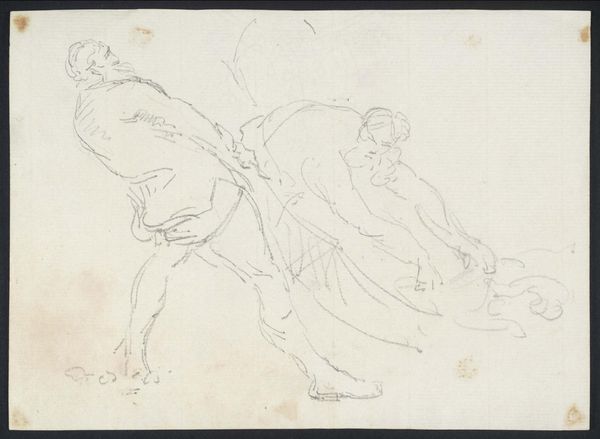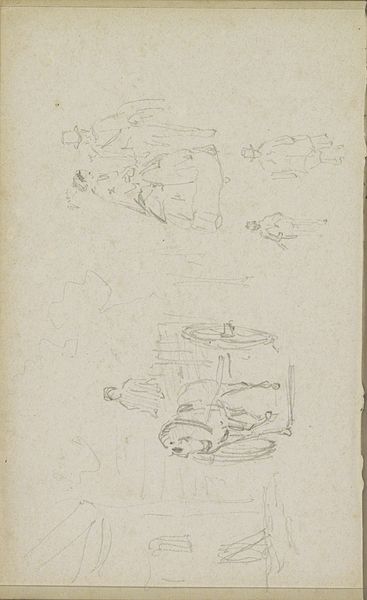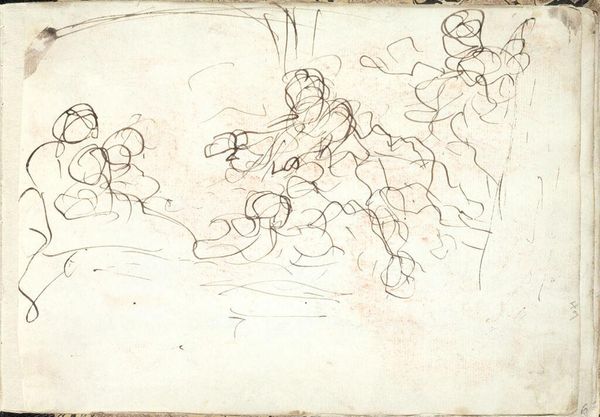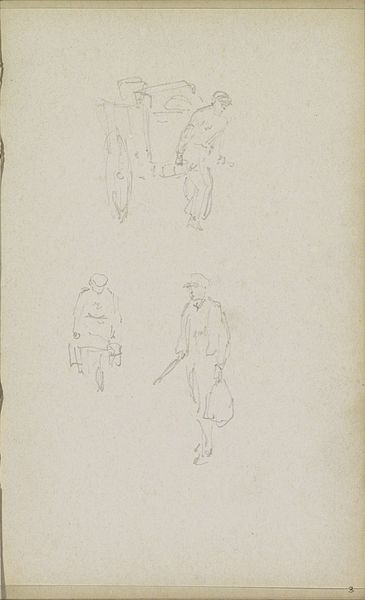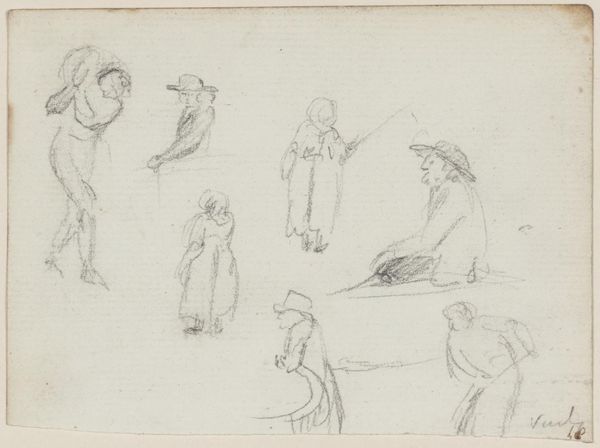
drawing, paper, pencil
#
drawing
#
pen illustration
#
pen sketch
#
landscape
#
figuration
#
paper
#
pencil
#
sketchbook drawing
#
genre-painting
#
academic-art
Copyright: Rijks Museum: Open Domain
Curator: Looking at this study sheet, made with pencil, pen, and paper, I see immediately a sense of classical composition juxtaposed with everyday life sketches. Do you feel it, too? Editor: I find it melancholic. It's so transient, capturing fleeting moments: a rider passing by, a resting ox. You immediately grasp the sense of a working environment with this candid display of what can be considered "low class" population going about their activities. Curator: Indeed. What strikes me is how Hendrik Abraham Klinkhamer, though creating this work sometime between 1820 and 1872, references 17th-century genre painting in his approach to subject matter. This sheet titled "Studieblad met ossen, ruiters en een kan" (Study Sheet with Oxen, Riders, and a Pitcher), which is part of the Rijksmuseum collection, appears like an exercise in observation and memory, likely meant for a larger painting. Editor: So, how might the rise of academic art impacted these scenes, making it a perfect vehicle for illustrating the values and ideologies of the time, especially regarding social structures? Were those "low class" folks and their social roles affected as much as what high class roles and traditions have? I am eager to understand its broader historical and societal implications. What statements are made, perhaps subconsciously, by immortalizing what many perceived as being not worthy of attention? Curator: I think it shows how the 19th century embraced a form of social realism while romanticizing historical imagery. Even something as utilitarian as the placement of the pitcher becomes imbued with this idea of essential domesticity. In other words, it is all connected: what looks like disparate figures is a carefully constructed world-view. Editor: Yes, precisely! But do you not believe the lack of background information, or, context surrounding the scene can also signify an agenda and the intent to display these scenes, this depiction of everyday labor, almost devoid of any social critique and, thus, glorifying this model that promotes maintaining a given societal stance? Curator: That is, for sure, a perspective to bear in mind. Thank you for helping me to observe it with that criticality. Editor: Anytime! Examining these artworks with such viewpoints makes history even more thrilling.
Comments
No comments
Be the first to comment and join the conversation on the ultimate creative platform.
